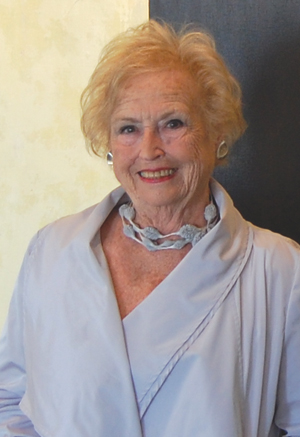
When Jeanne Parkin isn’t at her Yorkville-area home in Toronto, you’ll find her trekking across Canada and around the world searching for the next big thing in the world of art.
 Her track record has made her a go-to art consultant for law firms looking to expand or refresh their collection. For 25 years, she has worked with McCarthy Tétrault LLP at building and maintaining its renowned collection, which she also curates for the firm.
Her track record has made her a go-to art consultant for law firms looking to expand or refresh their collection. For 25 years, she has worked with McCarthy Tétrault LLP at building and maintaining its renowned collection, which she also curates for the firm.
“I have to have my antenna out there,” says Parkin. “If I find artists that are producing, then I want to get to them first and see that work before somebody else does because it’s quite a competitive field.”
Sometimes, she even treats herself to a few pieces. “I keep on buying, that’s my problem. I can’t keep my hands off. I just can’t stop.”
The plethora of paintings and photographs covering the walls of her apartment hints at her passion for art, but Parkin says that barely scratches the surface of her personal collection. “I’ve got things lined up against the wall and under the bed. Every cupboard is full. I’ve got things just stacked up everywhere.”
Sound pieces and sculptures litter the tables and desks around the room to create a diversity Parkin says she tries to reflect in her work for law firms. She encourages collectors to include video installations and photography in addition to paintings, thereby shifting their focus away from any particular medium.
“I look much more at content. It’s about the meaning of it much more than whether it’s abstract or representational, a painting or video.”
Jo-Ann McCluskey, who has worked with Gowling Lafleur Henderson LLP through her Joan of Art corporate art consultancy, says that while firms can make a lot of money on a sound investment, there’s plenty more to gain from a strong art collection.
“It stimulates the workplace, which is what any corporate workplace should do and it makes a welcoming environment for clients. You get some art with personality, and it makes it fun for people. They walk by and talk about what they like about it.”
In fact, McCluskey says art can be an essential part of a firm’s branding.
“If I go on a web site and I see all this colour and personality, but when I walk into the office and it’s all bookcases and maybe some boring old pictures of judges or worse, pictures from Home Depot, then they’re not portraying themselves as who they really are in the office space. If they have half-decent art, that shows some sort of value. It gives people the feeling that they can trust them.”
McCluskey has also worked with a number of medium- and small-size firms she says would benefit from a larger art budget but are reluctant to invest. Peter Riehm of Art Life Design in Ottawa has noticed the same trend. “Frugality is in,” he says. “People want really good solutions that don’t cost a lot.”
Many of Riehm’s legal clients contact him when they move offices in order to seize on the opportunity to purge a dated collection and start fresh.
“There’s a style and professionalism that firms are trying to show,” he says. “In the overall budget for redesigning an office, art is a small part of it, but I think it has a greater impact in relation to its cost.”
Read more: Focus: Adopting an innovative law firm office design
At the same time, Riehm notes the structure of law firms encourages the principals to take a real interest. “The partners really want to be involved in the process because it’s their firm, and they own it. It’s really refreshing to deal with the people who make the decisions and know what they want. At other companies, art is sometimes relegated to a facilities person or somebody whose job it is to gather things for the office.”
Parkin, however, has her own theory as to why lawyers find themselves attracted to art. “I like to think it’s because they’re so smart,” she says. “It’s their intelligence that makes them veer towards art.”
Nevertheless, the structure of a law firm can pose problems for art consultants. Many of Parkin’s clients, for example, have art committees of varying sizes. Sometimes, that can mean up to six or seven different partners, each wanting a say in decisions on the collection, are involved.
For her part, Parkin sees her role as an educational one exposing clients to the most meaningful and relevant art in the marketplace while gaining their confidence in her choices and arrangements over time.
“It’s about being open to new ideas and to new experiences,” she says. “Otherwise, you remain with a closed mind. Suddenly, a whole world is opening up in a way you didn’t expect to happen. It’s so exciting for me because I get to see how far they’ve come from where they were.”
This is the first instalment in the Law Times summer series looking at law firms’ art collections and the people who put their time into making them happen.